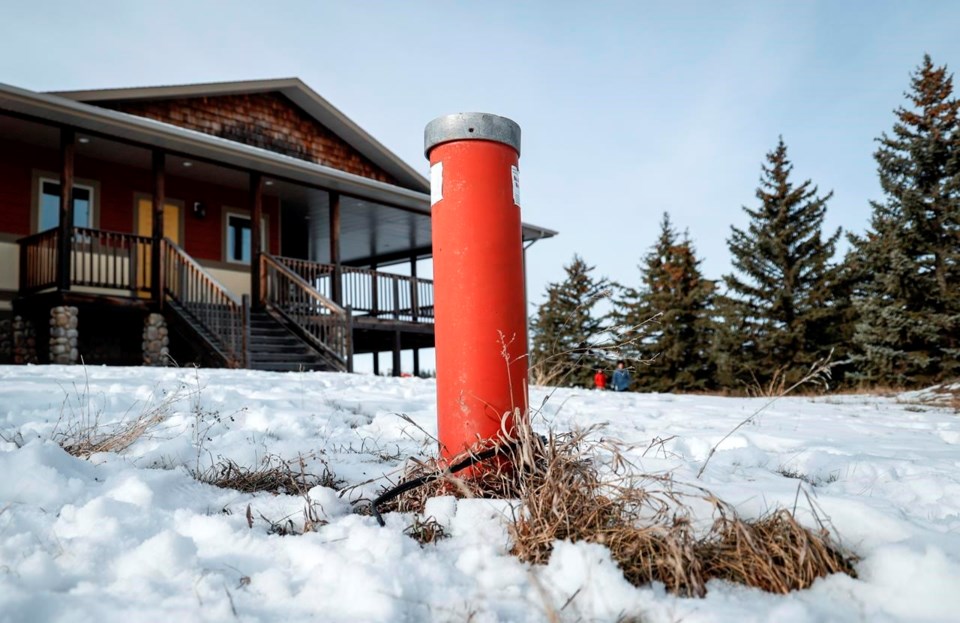OKOTOKS, Alta. — Henk de Haan says that for five years he was blissfully unaware of the invisible danger as his children slept in the basement of their acreage home southwest of Calgary.
When a friend suggested he check for radon, he learned he had a big problem on his hands.
Radon is a harmful radioactive gas that forms naturally when uranium, thorium or radium break down in rocks, soil and groundwater.
"It was after my home was built and occupied, and my children had been sleeping in the basement, that I decided to test my home and my radon levels were dangerous," de Haan, 63, said in an interview.
The air measured at 400 radon gas becquerels per cubic metre. Health Canada considers the maximum tolerated exposure for radon to be 200 becquerels.Â
De Haan installed a radon mitigation system, which sucked the radon out of the house and deposited it outside.
Although everything is fine now, he said, he still worries.
His wife is a breast cancer survivor and has undergone a double mastectomy.
"I wouldn't be able to live with myself knowing that radon is a potential risk, a high lung cancer risk and not do something about it," de Haan said.Â
A study by University of Calgary researchers reports a link between radon in rural homes based on how close they are to a drilled groundwater well.
"The air around the groundwater well itself is acting as a sort of superhighway,” said Aaron Goodarzi, principal investigator and associate professor at the University of Calgary's Cumming School of Medicine.
“(The air was) allowing deep underground radon to reach the surface much more quickly than it otherwise would. And the houses in rural communities then have that much more radon to draw inside."
Goodarzi added, "In rural communities, with groundwater wells, we've created these essentially drinking straws into the ground through which this radon is able to get to the surface much more readily."
The study, published Monday in Scientific Reports, involved 42,051 households across Canada.
It says that, on average, individuals living in rural communities were exposed to 30 per cent higher residential radon levels than those in urban centres.
"Radon is considered the second leading cause of all lung cancers in Canada and globally. It is radioactive, and it emits a type of radiation known as alpha radiation," Goodarzi said.
"Compared to an X-ray, an alpha particle is vastly more damaging to our DNA, generating mutations that drive our cells, in the lung, toward cancer."
The researchers said the findings show the importance of regular radon testing, particularly in rural areas.
"It should really flag this as an issue for any policymakers, because reducing our future burden of cancer, especially lung cancer, which is expensive to treat and very prevalent, is one of the most effective things we can do," Goodarzi said.
This report by The Canadian Press was first published Feb. 26, 2024.
Bill Graveland, The Canadian Press




